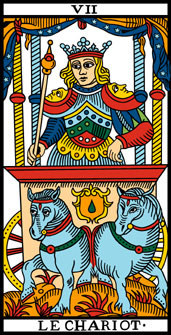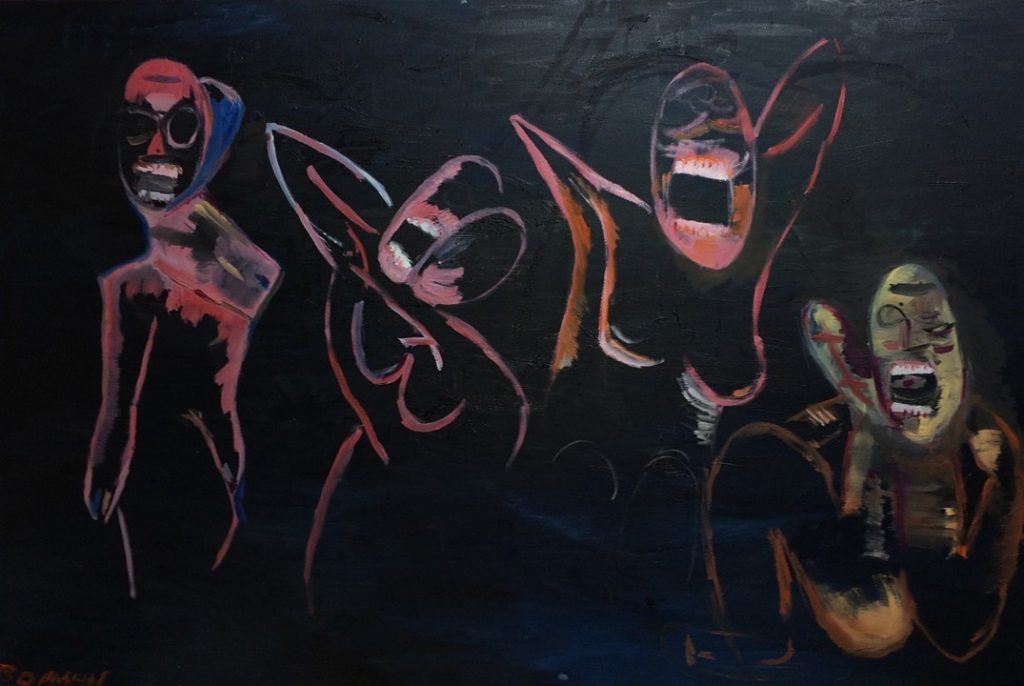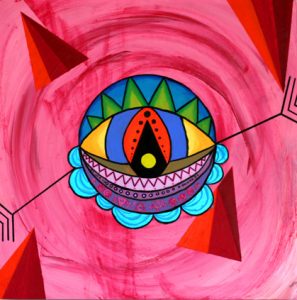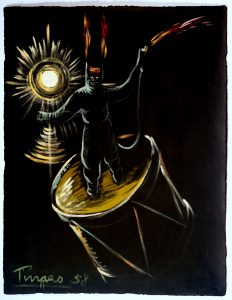
Opening reception 13th of December 6.30 to 9.30
The Chariot (VII) is the seventh trump or Major Arcana card in most traditional Tarot decks.
A powerful, princely figure sits in a swift chariot, pulled usually by two sphinxes or horses. The figure is crowned and holds a sword or wand.
The Chariot Tarot card points to a triumphal feeling of freedom, as if the Charioteer is being paraded through the streets as a hero (or heroine). The card reflects congratulations for high achievement, and serves as a sign of empowerment.
The Chariot is a card about overcoming conflicts and moving forward in a positive direction and represents a new start in life. It shows that the time has come to face up to the obstacles and overcome them. It suggests that greatness can be attained when the physical and spiritual forces are balanced.
In its positive version, the Chariot tells us that we have great self-confidence, that our natural ease and optimism enable us to undertake anything. It guarantees that everything will go our way. We have faith in our destiny and we can rely on it. We seem to be headed for triumph and success… nevertheless nothing is that simple and every rose has its thorn. The darkest side of the Chariot shows some carelessness, a tendency to be too relaxed.
 For this new show in the ground floor of Hundred Years Gallery, after gathering some works from the artists Kofi Boamah, Ana Pallares, Juan Gallego Pinazo & Carla Delgado, I decided to consult randomly a Tarot Book and The Chariot figure opened in front of me.
For this new show in the ground floor of Hundred Years Gallery, after gathering some works from the artists Kofi Boamah, Ana Pallares, Juan Gallego Pinazo & Carla Delgado, I decided to consult randomly a Tarot Book and The Chariot figure opened in front of me.
As a way of guiding our next steps into the uncertain near future, the apparition of this card confirmed the inner power of all the artists exhibiting, the reason of my selection, and also suggests to beware of that easy habit of dwelling in self-confidence and forgetting how necessary is to keep recreating, dialoguing and interacting with our physical (and not physical) world – but most importantly, to share our supernatural gifts with our fellow beings.
The conversation is open to the public, hanging from the walls with their rich and intriguing visual language.
Kofi Boamah is a multidisciplinary artist who concentrates on illustrating the inner workings of the human condition and creating compositions that enlighten, transform and sometimes humourize that which seems ordinary, into sagacious and challenging works. Primarily working in the fields of: painting, illustration, film,photography, prose and poetry — the artist’s main aim is to: “Pursue the intrinsic feeling of a violent serenity with suggesting nods to past artists and a new unknown future.”

Born in 1993 in Barcelona, Ana Pallares was fifteen when she discovered graffiti and continued exploring different artistic practices such as painting, illustration and poetry. Her work reflects on pain, death and other intangible realities which too often occur with little, or incomprehensible, reason. She strives to find and attach new meanings to these realities hoping to present them in a healthier more manageable way: ‘ultimately aiming to turn destructive feelings into constructive action‘ . Interested in ambiguity as it plays with the surprise effect, she finds great joy painting the deformed and weird faces of her works with rainbow colours. ‘People feel lost while watching them whereas I feel I could not have expressed the tragicomedy of life in a better way‘.
Juan Gallego Pinazo (Málaga 1921-2009) was a Spanish painter whose practice started when he won a scholarship in Zaragoza Arts School after the Spanish Civil War. He was trained after the Spanish Masters, most than any by Francisco de Goya’s influence, and frequently commissioned for historical and religious large paintings, personalities’ portraits and festivals posters.
Her interest in art began when, as a teenager, the music of different movements such as Punk, Grunge, Electronic…and the wide spread impact of the Graffiti as an insurgent (political-social) art, induced her to take the spray cans and paint his own logo Amanito all over the walls of Barcelona by the guidance of her closed friend, the well known street artist El Xupet Negre.



